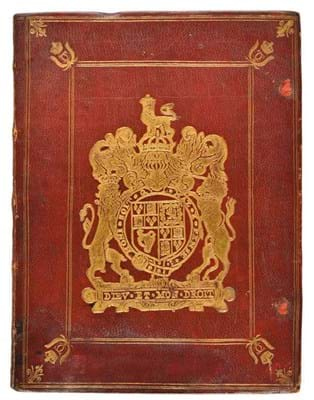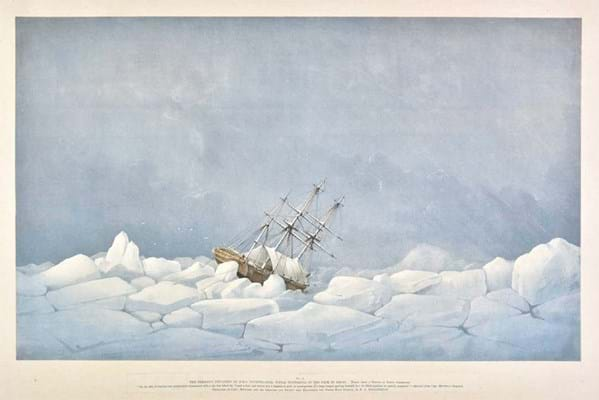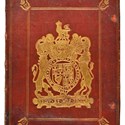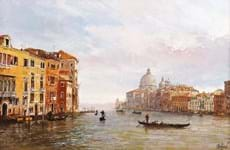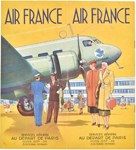The arms of Charles II and royal ciphers at the corners could hardly be more prominently displayed in a red goatskin binding made for a pamphlet offered in a recent Gloucestershire auction.
Sold for £3200 at Dominic Winter (20% buyer’s premium) on May 15, it was produced during his reign (1660-85) by the then royal binder, Samuel Mearne, to preserve a 1640 edition of an already rare work that had that had first been published in 1606.
It offered prayers and thanksgiving for the deliverance of the king from …the most Traiterous and Bloody intended Massacre by Gunpowder…, the plot to blow up parliament – along with James I and others – that had been foiled in the previous year.
Franklin investigation
A very different highlight was a pair of rare, hand-finished coloured lithographs by Samuel Gurney Cresswell relating to events in the search for the lost Franklin expedition to discover a Northwest Passage.
Neither of these plates were among the Eight Sketches in Colour…of the Voyage of the H.M.S. Investigator published in 1854 to feature the work of Cresswell, a 2nd Lieutenant and the expedition artist on a search expedition led by Captain Robert McClure.
Framed and glazed, they were two of a now very rare group of four separately issued coloured litho plates that sold at £6000 and £5800. View No.1 shows ‘The Perilous Situation of H.M.S. Investigator, while Wintering in the Pack in 1850’ – a detail of which was used for the sale catalogue cover illustration. The other, No.IV, depicts ‘HMS Phoenix and the Breadalbane at the Moment when the latter was Crushed and Sunk…’
A three-masted barque, the sunken Breadalbane, was found in 1980. As a result of her slow deterioration in the Arctic, she is considered one of the best-preserved wooden ships ever found in the sea.
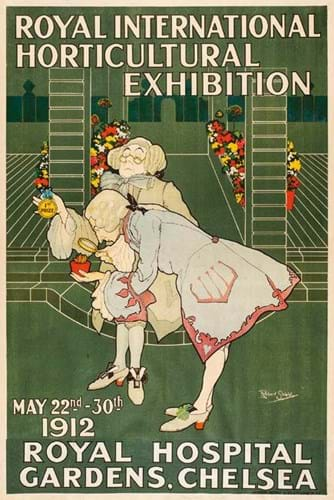
A topical lot, this coloured litho poster by Robert Shield promoted the 1912 launch of what we now call the Chelsea Flower Show. It sold at £740.
First Chinese-English dictionary
Estimated at £300-500 in the South Cerney sale but sold at £6000 was an incomplete first-edition copy of the first Chinese-English dictionary: Robert Morrison’s Dictionary of the Chinese Language in Three Parts.
Printed at the East India Company’s Press in Macao, the full work appeared during the years 1815- 23 but complete copies are very rare. This example comprised only the first and third parts, but the latter is much the largest, running to three volumes.
If the linguistic challenges were not enough, the difficulties that Morrison encountered included the theft of the entire stock of italic types, stolen before they were landed from the ship that had conveyed them from England, as he noted in a contemporary advertisement for the work.
Sold at £2600 was another great rarity in this field, a copy of Donald Bruce’s Phrases in the Canton Dialect of the Chinese Language. Printed in Canton in 1866, this work of some 75pp, stab-stitched in cloth-backed boards of the period, was in poor condition but the saleroom could trace no other example in either libraries or commerce.
Cookery highlights
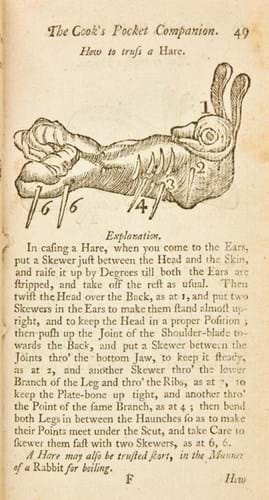
‘How to truss a hare’ is the theme of one of eight woodcut illustrated pages from The Cook’s Pocket Companion. And Compleat Family Guide, a very rare work of 1758 by Lydia Honeywood, to which is added a section on “…most disorders the Human Body is Liable to be Afflicted with…” by an eminent physician. In original boards with a now worn leather backstrip and a contemporary outer wrapper of vellum manuscript waste, it sold at £2400.
One early cookery book is illustrated above, but by far the largest contribution to the sale in this field was the collection of the late Tony Haynes. A Birmingham greengrocer, his collection focused principally on works dating from the publication of Mrs Beeton’s famous book of the mid-19th century to those from the 1940s.
Out of some 85 lots in all, a great many of them multiples, the stand-out item was one of the slightly earlier things on the menu: an 1846 first in original cloth of The Jewish Manual; or Practical Information in Jewish and Modern Cookery that made £3600.
Catalogued as the first kosher cook-book in the English language, its anonymous author is believed to be Lady Judith Montefiore, wife of the long-lived philanthropist, Sir Moses Montefiore of Ramsgate.
The cookbook, said the saleroom, reflects the author’s social position and is clearly directed at ladies who maintain households with servants.
She adapts recipes to conform to Jewish dietary laws, replacing ingredients such as lard, so much used in English kitchens, and eliminating shellfish and forbidden meats. She also recommends simplicity in dress, considers delicate hands a mark of elegance and refinement and carefully assesses the effect of diet on the complexion.
The author sought to elevate home cooking with social polish while remaining true to the tenets of Jewish practice.


